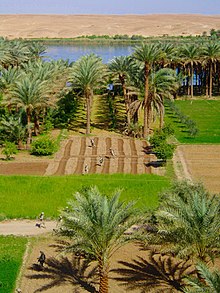|
Combatants of the Iraq War
 The combatants of the Iraq War include the Multinational Force in Iraq and armed Iraqi insurgent groups. Below is a list of armed groups or combatants that participated in the Iraq War of 2003–2011. Invasion
Post-invasionSpilloverSyria
Coalition troop deployment The Multinational Force in Iraq is a military command led by the United States fighting the Iraq War against Iraqi insurgents. "Multi-National Force — Iraq" replaced the previous force, Combined Joint Task Force 7, on May 15, 2004. The media in the U.S. has used the term U.S.-led coalition to describe this force, as around 93% of the troops are from the United States.[6] Due to the expiration of the UN authorization on foreign troops in Iraq, the end of 2008 was supposed to mark the end of the Multinational Force in Iraq force with all of the remaining coalition partners withdrawing their armed forces.[7] On July 28, 2009, Australian troops departed Iraq, leaving only U.S. troops operating in MNF-I, under the U.S.-Iraq Status of Forces Agreement. Troop numbersAs of September 2009, all non-U.S. coalition countries have withdrawn their troops.
United NationsThe United Nations deployed a small contingent to Iraq to protect UN staff and guard their compounds. The U.N. mandate for this force expires in August 2009.[citation needed] United Nations Assistance Mission in Iraq (UNAMI)
NATOSeveral NATO member-states have deployed instructors to Iraq to train Iraqi security and military forces in conjunction with the MNF: NATO Training Mission - Iraq (NTM-I). Armed Iraqi groupsThe Iraqi insurgency is the armed insurgency, by diverse groups, including private militias, within Iraq opposed to the US led occupation and the U.S.-supported Iraqi government. The fighting has clear sectarian overtones and significant international implications (see Civil war in Iraq.) This campaign has been called the Iraqi resistance by its supporters and the anti-Iraqi forces (AIF) [8] by Coalition forces. Insurgents By fall 2003 these insurgent groups began using typical guerrilla tactics: ambushes, bombings, kidnappings, sniper attacks and the use of IEDs. Other actions include mortars and suicide attacks, explosively formed penetrators, small arms fire, anti-aircraft missiles (SA-7, SA-14, SA-16) and RPGs. The insurgents also conduct sabotage against the oil, water, and electrical infrastructure of Iraq. Coalition statistics (see detailed BBC graphic) show that the insurgents primarily targeted coalition forces, Iraqi security forces and infrastructure, and lastly civilians and government officials. These irregular forces favored attacking unarmored or lightly armored Humvee vehicles, the U.S. military's primary transport vehicle, primarily through the use of roadside IED.[9][10] Insurgent groups such as the al-Abud Network have also attempted to constitute their own chemical weapons programs, trying to weaponise traditional mortar rounds with ricin and mustard toxin.[11] There is evidence that some guerrilla groups are organised on a large scale, most likely by the Fedayeen Saddam, Ba'ath loyalists, religious radicals and nationalist Iraqis that are angered by the occupation.[12] MilitiasTwo of the most powerful current militias are the Mahdi Army and the Badr Organization, with both militias having substantial political support in the current Iraqi government. Initially, both organisations were involved in the Iraqi insurgency, most clearly seen with the Mahdi Army at the Battle of Najaf. However, in recent months, there has been a split between the two groups. This violent break between Muqtada al-Sadr's Mahdi Army and the rival Badr Organization of Abdul Aziz al-Hakim, seen in the fighting in the town of Amarah on October 20, 2006, would severely complicate the efforts of Iraqi and US officials to quell the soaring violence.[13] More recently in late 2005 and 2006, due to increasing sectarian violence based on either tribal/ethnic distinctions or simply due to increased criminal violence, various militias have formed, with whole neighborhoods and cities sometimes being protected or attacked by ethnic or neighborhood militias. One such group, known as the Anbar Awakening, was formed in September 2006 to fight against Al Qaeda and other radical Islamist groups, in the particularly violent Anbar province. Led by Sheik and Abdul Sattar Buzaigh al-Rishawi, who heads the Sunni Anbar Salvation Council, the Anbar Awakening has more than 60,000 troops and is seen by key US officials such as Condoleezza Rice as a potential ally to US occupation forces.[14] Al-Qaeda in IraqAl-Qaeda is a group which is playing an active role in the Iraqi insurgency. The group was led by Abu Musab al-Zarqawi until his death in 2006; it is now believed to be led by Abu Hamza al-Muhajir[15] (aka Abu Ayyub al-Masri.[16]) See also
References
|